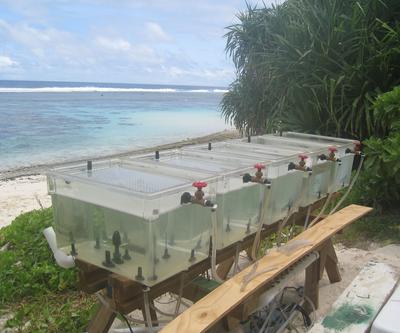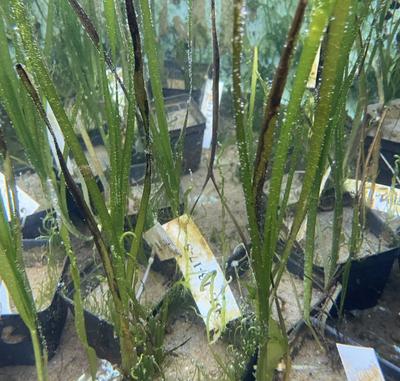In the Bay Lab, we combine genomic tools with physiological experiments, ecological observations, and large-scale environmental data to learn about how organisms exist in a range of environments and understand how anthropogenic changes in the environment impact individuals, populations, and species. We work in a diverse range of systems, from coral reefs to migratory birds. Some of the main research themes are summarized below.
The role of phenotypic plasticity in environmental response
Perhaps the most rapid response to environmental change is acclimation, when individual organisms adjust their physiology to cope with new environments. Although this process is widespread, we are just beginning to define the rates, limits, and underlying cellular mechanisms. Coral reefs are important systems for acclimation studies, as they provide roughly one billion people with food and income, yet are extremely vulnerable to temperature shifts. Using a combination of laboratory manipulations and field transplants, we previously documented that acclimation can have a large effect on thermal tolerance in corals and can occur very quickly. We documented gene expression outcomes associated with acclimation, including an overall dampening of the transcriptional response to heat stress. Now we are using epigenomic sequencing to understand the basis for this gene regulatory response and how it differs among closely related species.

Adaptation across environmental gradients
One mechanism for species to persist across a wide range of environments is through adaptation to local environmental conditions. In high gene flow systems like marine environments, local adaptation was traditionally thought to be rare, but the recent rise of genomic data has led to the discovery of environmentally-associated genetic structuring in otherwise open populations. We use a field experiments and genomic sequencing to understand the maintenance and mechanisms of local adaptation in natural populations. In corals, we established differences in fitness-related traits (survival and growth) across a small-scale temperature gradient and identified genetic variation associated with individuals living in hotter environments. We are now delving deeper into the co-evolution of traits associates with thermal tolerance in corals within and across species. We are also using similar methods to examine genomic adaptation to temperature or other anthropogenic stressors in a range of taxa including birds, urchins, and seagrass.

Evolutionary dynamics of species range shifts
Under anthropogenic climate change, the notion that biogeographic boundaries are stable over ecological timescales is no longer tenable. Examples of rapid range shifts associated with climate change now prevail across both terrestrial and marine systems. Such contemporary shifts in species’ distributions may have profound impacts on population dynamics, species interactions, and ecosystem function, and highlight the urgency for understanding and predicting responses to climate change. At the same time, they provide unique opportunities to disentangle fundamental demographic and selective processes that occur during range shifts. We are currently working to understand evolutionary causes and consequences of range shifts in two different systems. In Anna’s hummingbird, we are using genomic data to identify signals of selection during the rapid range expansion from California to Alaska that occurred over the past half century. In owl limpets, we are using a combination of genomic and demographic data to test whether selection at the leading edge of the species range can facilitate further range expansion. These studies can further add to our understanding of the evolutionary effects of human-induced range shifts.

Predicting evolutionary responses to climate change
In addition to exploring past and current patterns of adaptation, we are interested in integrating data from genome scans into more future-oriented predictive frameworks. Once we have an estimate of the genetic basis of adaptation across contemporary environmental gradients, we can use this information to predict population persistence and vulnerability under predicted future climate change scenarios. In corals, we have used simulations to predict population trajectories under warming ocean temperatures. In migratory birds, we estimated which populations would require the greatest genetic shifts to keep up with future climate change, finding that those populations were already declining over recent decades. We are now expanding on this work both by refining methods used for prediction and looking to the past using historical samples to ground truth our methods.
